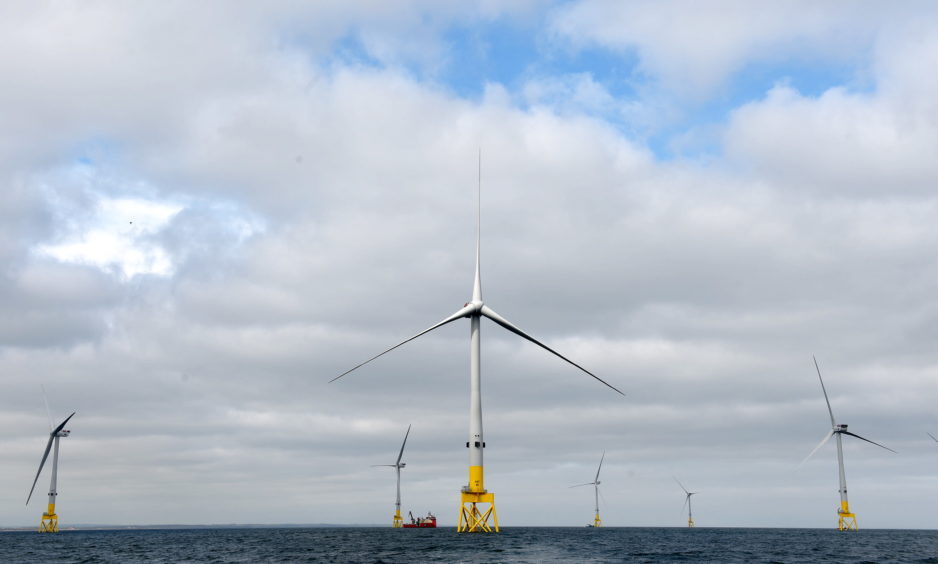
In 2014, when involved in developing Aberdeen Renewable Energy Group’s roughly 100MW Aberdeen Bay Windfarm plan, I and other members of the team were offered a briefing on a new way of bidding projects designed to drive down prices.
It was called the Contract for Difference; a sort of reverse auction for want of a better way of describing it.
It was an education exercise for us; a wee look into the maybe future of offshore wind where everyone in the room knew that costs were going to have to be slashed dramatically if dreamed of North Sea turbines were ever going to complete with onshore wind.
Moving to the present day and according to the UK government, the CfD scheme has been successful in delivering a substantial volume of low-cost offshore renewables capacity through competitive auctions.
Since the first allocation round (2015), the CfD scheme has delivered 27GW of renewables capacity and seen the clearing price of certain technologies, like offshore wind, fall by around 70%.
The two-way pay-as-clear CfD scheme is widely recognised as having been a successful tool for attracting investment in low-carbon electricity generation capacity in the UK and driving cost reduction in low-carbon technologies.
Moreover, it has turned out to be a far more powerful mechanism for driving down electricity prices than had been anticipated.
Under CfDs, developers are paid a flat (indexed) rate for the electricity they produce over a 15-year period; the difference between the ‘strike price’ (a price for electricity reflecting the cost of investing in a particular low carbon technology) and the ‘reference price’ (a measure of the average market price for electricity in the UK market).
The fixed strike price in a CfD contract means that renewable assets engaged are not exposed to price signals. Government department BEIS recognises that a lack of real-time market exposure reduces incentives for plants to operate more flexibly where possible, increasing the investment needed in low carbon flexibility.
Trade association Energy UK has on a number of occasions called for the government to publish an overall procurement strategy for the CfD scheme, at least out to 2030.
It is clearly a reasonable ask given that a CfD awarded tomorrow would carry out to 2037.
“Average wholesale prices are likely to fall as the proportion of renewable generation increases, which would lead to a greater dependence on existing support schemes,” claims BEIS in its latest position paper.
Aside from the current, exceptional energy crisis that has beset Europe as a result of the Russian-Ukrainian war, it would appear that the UK electricity market was already under pressure because of ongoing reforms in the EU and despite Brexit.
In particular, our European neighbours are becoming more sophisticated in their approach to the CfD. It’s no longer good enough for a developer to bid into the price basement, cheap as chips style. Non-price criteria in wind farm auctions are being introduced.
According to trade association Wind Europe, up until recently, wind farm developers bidding into auctions focused solely on reducing the cost of their offshore wind farms, because price (of the electricity they generate) was the only criterion.
The European Commission’s new State Aid Guidelines for Energy (CEEAG), launched in January, now allow for up to 30% of the scoring in CfD auctions to be based on non-price criteria.
They could typically focus on building a strong track record in observing high environmental and sustainability standards, developing value chains across Europe and localising by engaging actively with local communities; also developing state-of-the-art wind technologies that allow for better system integration of renewables into the EU’s energy system.
I have searched for references to safety in both the BEIS and April 2022 Wind Europe papers and the word is conspicuously absent. If this had been the oil & gas industry, it is a fair certainty that safety would have been to the fore.
The CfD mechanism has it seems done a great job so far, especially driving down the cost of offshore wind but it does not intuitively protect safety. And power generation is inherently dangerous.
Cheap ultimately begets nasty. Cheap lays the foundations of future potential problems and, with Big Wind accident rates clearly on the rise (Scotland Against Spin Data to March 2022), this is something that neither Big Wind nor Governments will have to face up to.
I’m going to stick my neck out here and suggest that safety specifics can be built into the EU’s new CEEAG model with relative ease.
But if the UK government’s CfD model remains price obsessed then, sooner or later, we’re going to hit the North Sea wind farm buffers in a serious way.
